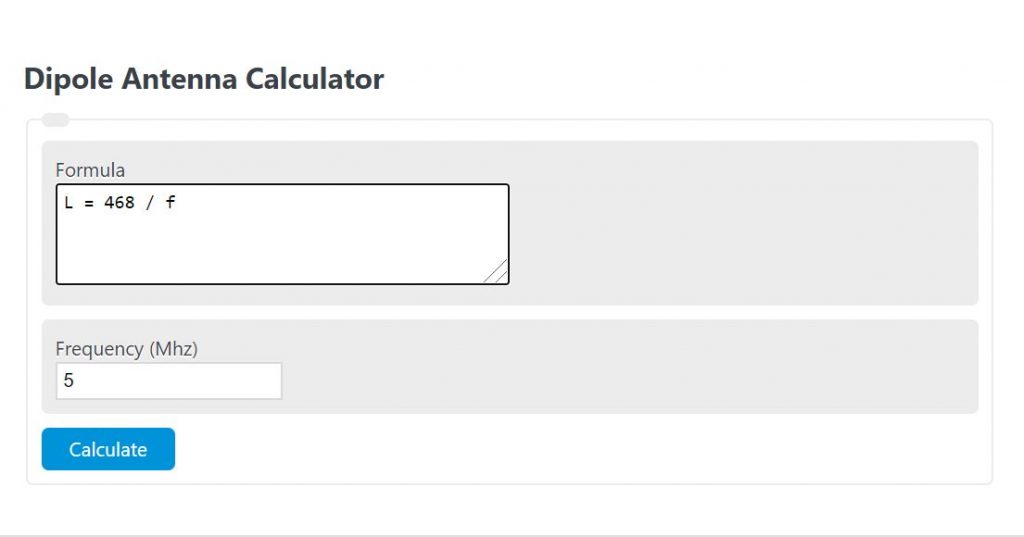Enter the frequency to be used by the antenna into the calculator to determine the total length of the dipole and the length of each side.
Dipole Antenna Formula
The following formula is used to calculate the dipole antenna length.
L = 468 / f
- Where L is the length (feet)
- f is the frequency in MHz
Length (feet) refers to the measurement of the distance between two points using the unit of feet.
Frequency in MHz refers to the number of cycles or oscillations per second in a radio wave or electromagnetic signal, where 1 MHz equals one million cycles per second.
Dipole Antenna Definition
A dipole antenna is a simple wire antenna that is widely used for communication purposes. It consists of two conductive elements, typically in the shape of straight rods or wires, aligned in parallel and separated by a small gap. The length of the elements is typically half the wavelength of the radio wave being transmitted or received.
Dipole antennas are important because they are efficient in transmitting and receiving electromagnetic waves. They are beneficial for medium-range communication applications, such as radio and television broadcasting, Wi-Fi networks, and amateur radio stations. Dipole antennas are relatively easy to construct, cost-effective, and provide a balanced radiation pattern, making them a popular choice in various applications.
Dipole Antenna Example
How to calculate a dipole antenna length
- First, determine the frequency to be used.
Determine the frequency in MHz
- Calculate the total length
Calculate the total length of the dipole using the formula above.
- Calculate the length of each element
Divide the value from step 2 by 2 to calculate the length of each side.
FAQ
What factors affect the performance of a dipole antenna?
The performance of a dipole antenna can be influenced by several factors, including the antenna’s length, the material of the conductive elements, the surrounding environment, the height above ground, and the frequency of operation.
Can dipole antennas be used for frequencies other than those specified in the calculation?
Yes, dipole antennas can be adapted for various frequencies by adjusting the length of the conductive elements. However, optimal performance is achieved when the antenna is tuned specifically to the intended frequency.
How does the dipole antenna’s orientation affect its radiation pattern?
The orientation of a dipole antenna affects its radiation pattern significantly. A horizontally oriented dipole antenna will have a different radiation pattern compared to a vertically oriented one, influencing the antenna’s coverage area and signal strength in various directions.
Are there any limitations to using dipole antennas for communication?
While dipole antennas are versatile and widely used, they have limitations, such as their size at lower frequencies (due to the relationship between wavelength and frequency) and their relatively simple radiation pattern, which might not be ideal for all communication needs.

